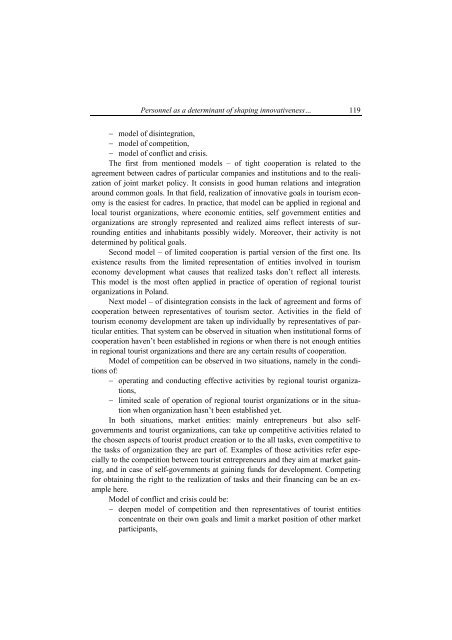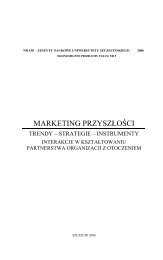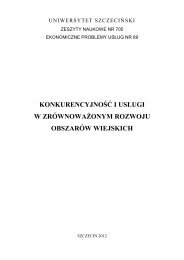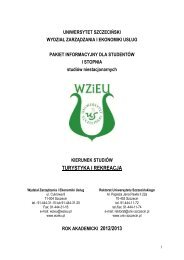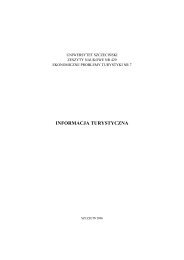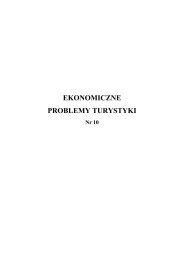Zeszyt naukowy - caÅoÅÄ - WydziaÅ ZarzÄ dzania i Ekonomiki UsÅug
Zeszyt naukowy - caÅoÅÄ - WydziaÅ ZarzÄ dzania i Ekonomiki UsÅug
Zeszyt naukowy - caÅoÅÄ - WydziaÅ ZarzÄ dzania i Ekonomiki UsÅug
You also want an ePaper? Increase the reach of your titles
YUMPU automatically turns print PDFs into web optimized ePapers that Google loves.
Personnel as a determinant of shaping innovativeness… 119<br />
model of disintegration,<br />
model of competition,<br />
model of conflict and crisis.<br />
The first from mentioned models – of tight cooperation is related to the<br />
agreement between cadres of particular companies and institutions and to the realization<br />
of joint market policy. It consists in good human relations and integration<br />
around common goals. In that field, realization of innovative goals in tourism economy<br />
is the easiest for cadres. In practice, that model can be applied in regional and<br />
local tourist organizations, where economic entities, self government entities and<br />
organizations are strongly represented and realized aims reflect interests of surrounding<br />
entities and inhabitants possibly widely. Moreover, their activity is not<br />
determined by political goals.<br />
Second model – of limited cooperation is partial version of the first one. Its<br />
existence results from the limited representation of entities involved in tourism<br />
economy development what causes that realized tasks don’t reflect all interests.<br />
This model is the most often applied in practice of operation of regional tourist<br />
organizations in Poland.<br />
Next model – of disintegration consists in the lack of agreement and forms of<br />
cooperation between representatives of tourism sector. Activities in the field of<br />
tourism economy development are taken up individually by representatives of particular<br />
entities. That system can be observed in situation when institutional forms of<br />
cooperation haven’t been established in regions or when there is not enough entities<br />
in regional tourist organizations and there are any certain results of cooperation.<br />
Model of competition can be observed in two situations, namely in the conditions<br />
of:<br />
operating and conducting effective activities by regional tourist organizations,<br />
limited scale of operation of regional tourist organizations or in the situation<br />
when organization hasn’t been established yet.<br />
In both situations, market entities: mainly entrepreneurs but also selfgovernments<br />
and tourist organizations, can take up competitive activities related to<br />
the chosen aspects of tourist product creation or to the all tasks, even competitive to<br />
the tasks of organization they are part of. Examples of those activities refer especially<br />
to the competition between tourist entrepreneurs and they aim at market gaining,<br />
and in case of self-governments at gaining funds for development. Competing<br />
for obtaining the right to the realization of tasks and their financing can be an example<br />
here.<br />
Model of conflict and crisis could be:<br />
deepen model of competition and then representatives of tourist entities<br />
concentrate on their own goals and limit a market position of other market<br />
participants,


